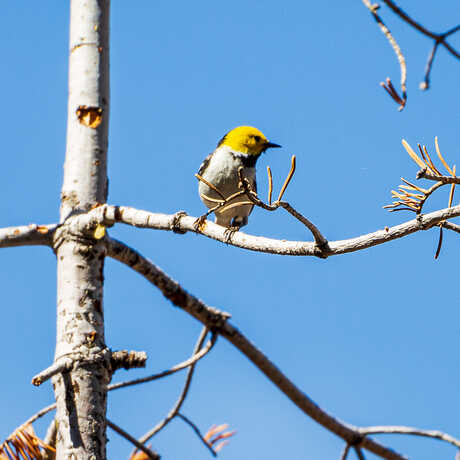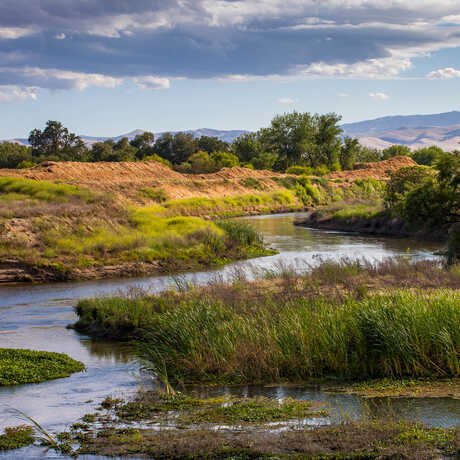How to Treat a Forest
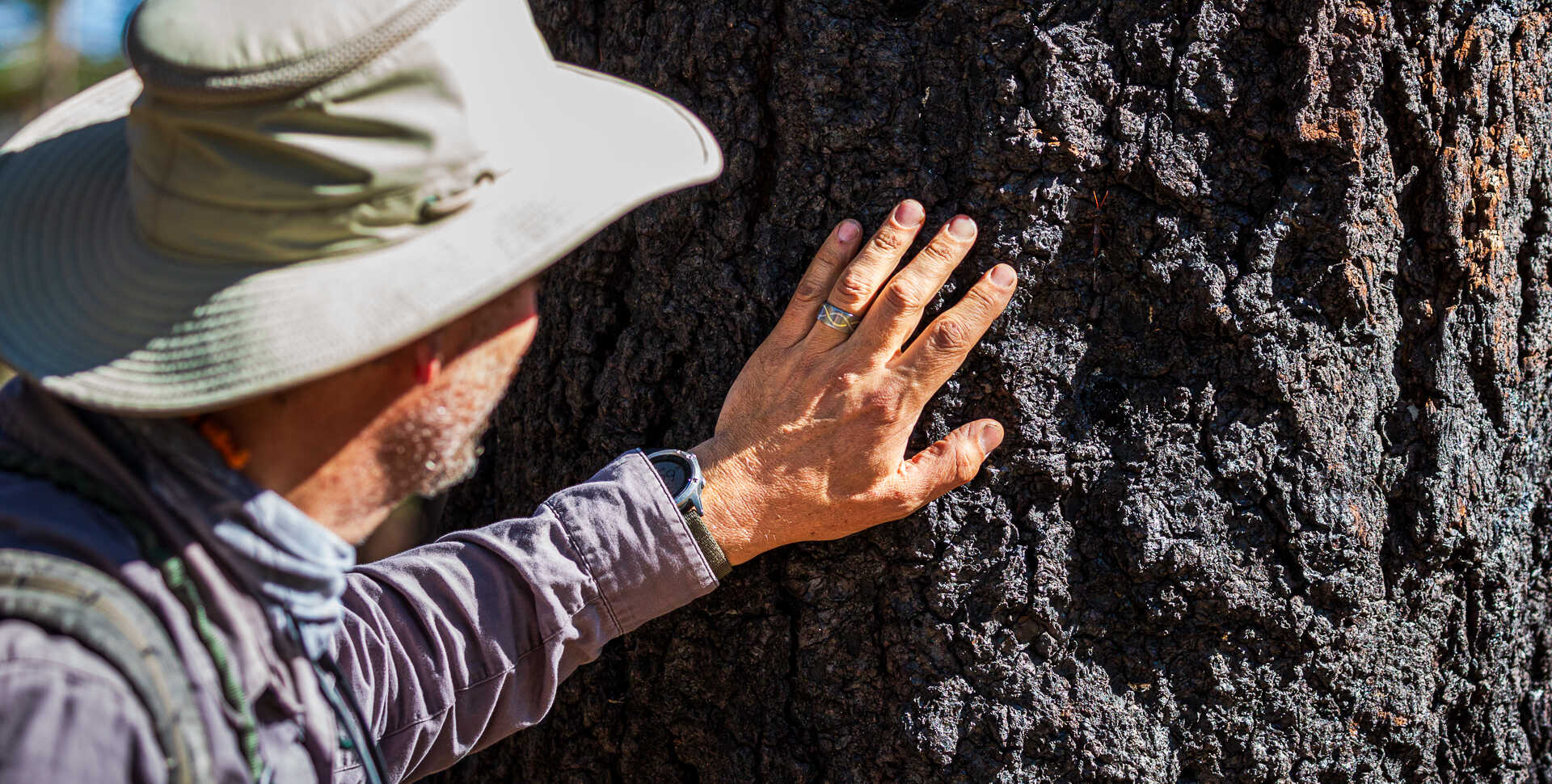
If you’re going to do three weeks of field work in the middle of nowhere, you could do far worse than to pitch your tent at the China Flat campground. Located in the heart of Eldorado National Forest off Route 50 and about 30 miles southwest of South Lake Tahoe, it’s a Sierra Nevada Eden, swathed in lichen-laden conifers and wildflower patches, with a glittering river literally running through it.
It’s also the nerve center of the Caples Creek Forest Resilience Project, a multi-year collaboration between the US Forest Service (specifically, the Pacific Southwest Research Station and Region 5 Ecology Program) and the Academy to study how prescribed, or intentional, fires can build a forest’s resistance to the ravages of wildfire—and even benefit biodiversity.

Now about those three weeks: That’s how long the project’s hardy Academy leads—Durrell Kapan, PhD, senior research fellow, and Jack Dumbacher, PhD, curator of ornithology and mammalogy—and a diverse team of Forest Service scientists, staff, and interns spend gathering data in the Caples Creek watershed every June. Academy photographer Gayle Laird and I joined the team for three days—a brief stint, but enough time to confidently draw four key conclusions.
What scientists do in the field can be a mystery to the layperson. Here’s a bit of demystification:
Get up at 3:15 every morning. Trudge miles in the dark to your first data collection site of the day. Stand as still and silent as a statue for 10 minutes as you focus your senses on a single goal: identifying all the birds you can within a 100 meter radius. Move on to your next data collection site 400 meters away. Complete as many sites as you can until 8 or 9 am when the birds start quieting down. Return to camp, review the day’s observations, map out the next day’s sites, cook some dinner, crash out in your tent while it’s still light out, do it all over again tomorrow—and 20-ish tomorrows after that.

It’s physically taxing, intellectually demanding work, but you’re buoyed by the prospect of improving the resilience of forest ecosystems. As the forests of the Sierras battle climate change, understanding the effects on biodiversity and how management makes a positive contribution to its conservation becomes increasingly important.
Because birds provide a strong indication of a forest’s overall biodiversity, measuring bird species and their abundance following a forest treatment helps managers understand how to manage forests and landscapes to conserve biodiversity and forest ecosystem integrity.

Dumbacher (left) and Kapan pause during a morning bird count in the Caples Creek watershed.
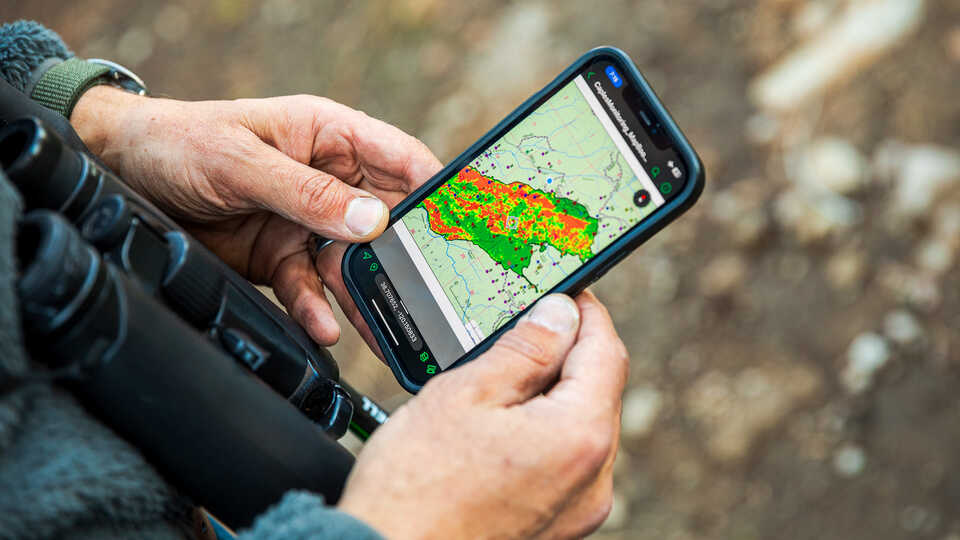
Kapan views a map of the relative intensity of the Caples burn and study sample points.

Acoustic recording units (ARU) record bird calls at sites throughout the study area.

Youth intern Brian Browne (left) and staff counter Dominik Mosur enter bird count data.
It’s just after dawn, and we’re watching Kapan conduct a bird count on a mountain ridge about 7,300 feet above sea level. The quiet is profound, enveloping; you can hear it in your ears. Suddenly, a duet: a warbling vireo and dark-eyed junco alert us to their presence. By the end of the day’s counts, Kapan, Dumbacher, intern Brian Browne, and staff counter Dominik Mosur have filled their data sheets with observations of over a dozen bird species.
Listen: Browne and Mosur simulate a northern pygmy-owl to attract birds
The mountain trail connecting this morning’s sites is also the scene of a showdown between two different kinds of fire. In 2019, it was the northern edge of the intentional Caples Creek burn. Two years later, it’s where the Caldor Fire was forced to make a detour. As we make our way along this line of demarcation, the evidence is all around us: Wielded wisely, prescribed burns clearly have the power to “immunize” forests against the worst impacts of wildfire.

It seemed to be business as usual for the birds despite their rather scorched surroundings. They flitted and flirted and nested, even joining forces as one cacophonous front to repel a predatory northern pygmy-owl. Still, it was impossible not to feel an acute sense of loss in the face of such devastation—until Kapan reminded me that fire is the natural order.
Until relatively recently, most of the western world thought fire should be feared, suppressed, extinguished. Forests must carpet mountainsides, not patchwork-quilt them. Charred timber was an admission of failure. Now, we’re finally catching on to what Indigenous communities have known all along: Forests are more resilient when they’re less dense, and small, intentional burns can keep larger, unplanned ones at bay.
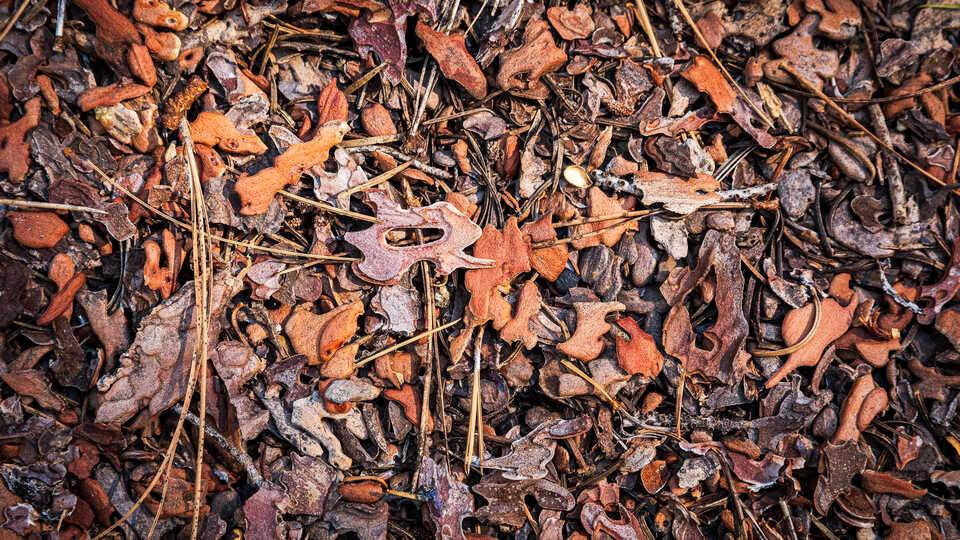
Puzzle-piece-shaped bark from a sugar pine (Pinus lambertiana).

The trunk of a burned tree in the Caples Creek watershed.

The winter’s record snowfall left its traces even in June.

A patch of fivespot (Nemophila maculata), endemic to California.
Armed with biodiversity data from 2018 through 2023, a period that includes both an intentional fire and a wildfire, the science team is able to make a positive correlation between prescribed burns and a forest’s overall resilience.
Treating the Caples Creek study area with fire in 2019 successfully prevented the Caldor Fire from re-burning it in 2021, and also seemed to usher in greater bird biodiversity. In our era of climate change, extreme heat, and more intense wildfires, it's heartening to find a spark of hope.

The Caples Creek watershed is full of strange, earthy secrets that only people who spend weeks at a time living in it would know. Peek in the crevice between a fallen tree and the soil and you might find a morel. Rub some ponderosa resin between your fingers until it gets gummy, then have a sugar-free chew. Get within hugging distance of a Jeffrey pine, take a big whiff, and let the sweet smell of butterscotch fill your nose.
Field work is, first and foremost, about collecting data. But after observing scientists observing birds, I learned that it’s also a meditation, a time to bear witness for nature, to measure its healing, its scars, its songs.
The Caples Creek Forest Resilience Project is a true collaboration, and the Academy is deeply grateful to our partners at the US Forest Service Pacific Southwest Research Station (Pat Manley, PhD, Angela White, PhD, Mary Clapp, PhD) and US Forest Service Region 5 Ecology Program (Becky Estes, PhD), our hosts at Eldorado National Forest, our many staff, interns, and volunteers through the years (including our 2023 crew, Brian Browne, Eddy Monson, Dominik Mosur, and Mark Schulist) and the dedicated community organizations (Americorps, Elegant Ears Mules Club, Sierra Nevada Conservancy) that make this work possible.



